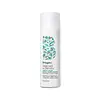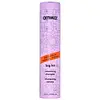What's inside
What's inside
 Key Ingredients
Key Ingredients

 Benefits
Benefits

 Concerns
Concerns

 Ingredients Side-by-side
Ingredients Side-by-side

Water
Skin ConditioningSodium Cocoyl Isethionate
CleansingLauramidopropyl Betaine
CleansingGlycerin
HumectantSodium C14-16 Olefin Sulfonate
CleansingCocamidopropyl Hydroxysultaine
CleansingCoffea Arabica Seed Oil
MaskingCopper Tripeptide-34
Skin ConditioningPanax Ginseng Root Extract
EmollientBiotin
AntiseborrhoeicCoconut Acid
CleansingLeuconostoc/Radish Root Ferment Filtrate
AntimicrobialSodium Methyl Cocoyl Taurate
CleansingSodium Isethionate
CleansingCitric Acid
BufferingAloe Barbadensis Leaf Juice
Skin ConditioningCaffeine
Skin ConditioningPropanediol
SolventLindera Strychnifolia Root Extract
Skin ConditioningTocopheryl Acetate
AntioxidantUbiquinone
AntioxidantGlycine
BufferingLarix Europaea Wood Extract
HumectantSodium Metabisulfite
AntioxidantCamellia Sinensis Leaf Extract
AntimicrobialZinc Chloride
AntimicrobialSodium Hydroxide
BufferingParfum
MaskingCaprylhydroxamic Acid
Benzyl Alcohol
PerfumingWater, Sodium Cocoyl Isethionate, Lauramidopropyl Betaine, Glycerin, Sodium C14-16 Olefin Sulfonate, Cocamidopropyl Hydroxysultaine, Coffea Arabica Seed Oil, Copper Tripeptide-34, Panax Ginseng Root Extract, Biotin, Coconut Acid, Leuconostoc/Radish Root Ferment Filtrate, Sodium Methyl Cocoyl Taurate, Sodium Isethionate, Citric Acid, Aloe Barbadensis Leaf Juice, Caffeine, Propanediol, Lindera Strychnifolia Root Extract, Tocopheryl Acetate, Ubiquinone, Glycine, Larix Europaea Wood Extract, Sodium Metabisulfite, Camellia Sinensis Leaf Extract, Zinc Chloride, Sodium Hydroxide, Parfum, Caprylhydroxamic Acid, Benzyl Alcohol
Water
Skin ConditioningSodium C14-16 Olefin Sulfonate
CleansingCocamidopropyl Betaine
CleansingSodium Cocoyl Isethionate
CleansingCocamidopropyl Hydroxysultaine
CleansingPhospholipids
Skin ConditioningNiacinamide
SmoothingPanthenol
Skin ConditioningCaffeine
Skin ConditioningBiotin
AntiseborrhoeicXylitol
HumectantMaltodextrin
AbsorbentRosmarinus Officinalis Extract
AntimicrobialSyringa Vulgaris Extract
Skin ConditioningMentha Piperita Oil
MaskingHippophae Rhamnoides Fruit/Seed Oil
AntimicrobialGlycerin
HumectantCoconut Acid
CleansingEthylhexylglycerin
Skin ConditioningButylene Glycol
HumectantPolyurethane-10
Polyquaternium-7
Polyquaternium-10
Polyquaternium-16
Zea Mays Starch
AbsorbentNatto Gum
Tetrasodium Glutamate Diacetate
Lactic Acid
BufferingTocopheryl Acetate
AntioxidantChlorphenesin
AntimicrobialSodium Chloride
MaskingSodium Phosphate
BufferingSodium Isethionate
CleansingSodium Hydroxide
BufferingSodium Benzoate
MaskingPhenoxyethanol
PreservativeParfum
MaskingBenzyl Benzoate
AntimicrobialHydroxycitronellal
PerfumingLimonene
PerfumingWater, Sodium C14-16 Olefin Sulfonate, Cocamidopropyl Betaine, Sodium Cocoyl Isethionate, Cocamidopropyl Hydroxysultaine, Phospholipids, Niacinamide, Panthenol, Caffeine, Biotin, Xylitol, Maltodextrin, Rosmarinus Officinalis Extract, Syringa Vulgaris Extract, Mentha Piperita Oil, Hippophae Rhamnoides Fruit/Seed Oil, Glycerin, Coconut Acid, Ethylhexylglycerin, Butylene Glycol, Polyurethane-10, Polyquaternium-7, Polyquaternium-10, Polyquaternium-16, Zea Mays Starch, Natto Gum, Tetrasodium Glutamate Diacetate, Lactic Acid, Tocopheryl Acetate, Chlorphenesin, Sodium Chloride, Sodium Phosphate, Sodium Isethionate, Sodium Hydroxide, Sodium Benzoate, Phenoxyethanol, Parfum, Benzyl Benzoate, Hydroxycitronellal, Limonene
Ingredients Explained
These ingredients are found in both products.
Ingredients higher up in an ingredient list are typically present in a larger amount.
Biotin is a B vitamin that is naturally produced by our bodies. It is also called Vitamin H.
Our bodies use biotin in the metabolism process. It also helps our bodies use enzymes and move nutrients around. A biotin deficiency can lead to brittle hair and nails.
More research is needed on applying biotin topically. However, taking biotin orally has been shown to help nourish the skin, hair, and nails. They play a role in forming skin-hydrating fatty acids.
Biotin is water-soluble. It can be found in foods such as fish, eggs, dairy, nuts, and meat. Vitamin H stands for "haar" and "haut". These are the German words for hair and skin.
Learn more about BiotinCaffeine is most associated with coffee, tea, and cacao. In skincare, it helps with calming inflammation and is rich in antioxidants.
While caffeine is used to treat cellulite and and dark circles, further studies are needed to prove this. It has been believed to help with these skin conditions due to its ability to dilate blood vessels and increase blood flow.
Some studies are looking into caffeine's ability to protect against UV rays.
Learn more about CaffeineCocamidopropyl Hydroxysultaine is a synthetic cleansing agent, though it is derived from coconut oil.
It is used to enhance the texture of products by boosting lather and thickening the texture. As a cleanser, Cocamidopropyl Hydroxysultaine is mild.
Coconut Acid isn't fungal acne safe.
Glycerin is already naturally found in your skin. It helps moisturize and protect your skin.
A study from 2016 found glycerin to be more effective as a humectant than AHAs and hyaluronic acid.
As a humectant, it helps the skin stay hydrated by pulling moisture to your skin. The low molecular weight of glycerin allows it to pull moisture into the deeper layers of your skin.
Hydrated skin improves your skin barrier; Your skin barrier helps protect against irritants and bacteria.
Glycerin has also been found to have antimicrobial and antiviral properties. Due to these properties, glycerin is often used in wound and burn treatments.
In cosmetics, glycerin is usually derived from plants such as soybean or palm. However, it can also be sourced from animals, such as tallow or animal fat.
This ingredient is organic, colorless, odorless, and non-toxic.
Glycerin is the name for this ingredient in American English. British English uses Glycerol/Glycerine.
Learn more about GlycerinParfum is a catch-all term for an ingredient or more that is used to give a scent to products.
Also called "fragrance", this ingredient can be a blend of hundreds of chemicals or plant oils. This means every product with "fragrance" or "parfum" in the ingredients list is a different mixture.
For instance, Habanolide is a proprietary trade name for a specific aroma chemical. When used as a fragrance ingredient in cosmetics, most aroma chemicals fall under the broad labeling category of “FRAGRANCE” or “PARFUM” according to EU and US regulations.
The term 'parfum' or 'fragrance' is not regulated in many countries. In many cases, it is up to the brand to define this term.
For instance, many brands choose to label themselves as "fragrance-free" because they are not using synthetic fragrances. However, their products may still contain ingredients such as essential oils that are considered a fragrance by INCI standards.
One example is Calendula flower extract. Calendula is an essential oil that still imparts a scent or 'fragrance'.
Depending on the blend, the ingredients in the mixture can cause allergies and sensitivities on the skin. Some ingredients that are known EU allergens include linalool and citronellol.
Parfum can also be used to mask or cover an unpleasant scent.
The bottom line is: not all fragrances/parfum/ingredients are created equally. If you are worried about fragrances, we recommend taking a closer look at an ingredient. And of course, we always recommend speaking with a professional.
Learn more about ParfumSodium C14-16 Olefin Sulfonate is a cleansing agent made from a mixture of long chain sulfonate salts. It can also help produce foam.
This ingredient may be drying. We recommend speaking with a professional if you have concerns.
Sodium cocoyl isethionate is a natural ingredient from coconut oil. It is an ultra gentle cleanser that gives a nice foam without drying the skin or impacting the skin barrier.
The amount of foam created depends on the amount of sodium cocoyl isethionate used in the product.
This ingredient also helps improve the spreadability of a product.
Learn more about Sodium Cocoyl IsethionateSodium Hydroxide is also known as lye or caustic soda. It is used to adjust the pH of products; many ingredients require a specific pH to be effective.
In small amounts, sodium hydroxide is considered safe to use. However, large amounts may cause chemical burns due to its high alkaline.
Your skin has a natural pH and acid mantle. This acid mantle helps prevent harmful bacteria from breaking through. The acid mantle also helps keep your skin hydrated.
"Alkaline" refers to a high pH level. A low pH level would be considered acidic.
Learn more about Sodium HydroxideWe don't have a description for Sodium Isethionate yet.
Tocopheryl Acetate is AKA Vitamin E. It is an antioxidant and protects your skin from free radicals. Free radicals damage the skin by breaking down collagen.
One study found using Tocopheryl Acetate with Vitamin C decreased the number of sunburned cells.
Tocopheryl Acetate is commonly found in both skincare and dietary supplements.
Learn more about Tocopheryl AcetateWater. It's the most common cosmetic ingredient of all. You'll usually see it at the top of ingredient lists, meaning that it makes up the largest part of the product.
So why is it so popular? Water most often acts as a solvent - this means that it helps dissolve other ingredients into the formulation.
You'll also recognize water as that liquid we all need to stay alive. If you see this, drink a glass of water. Stay hydrated!
Learn more about Water